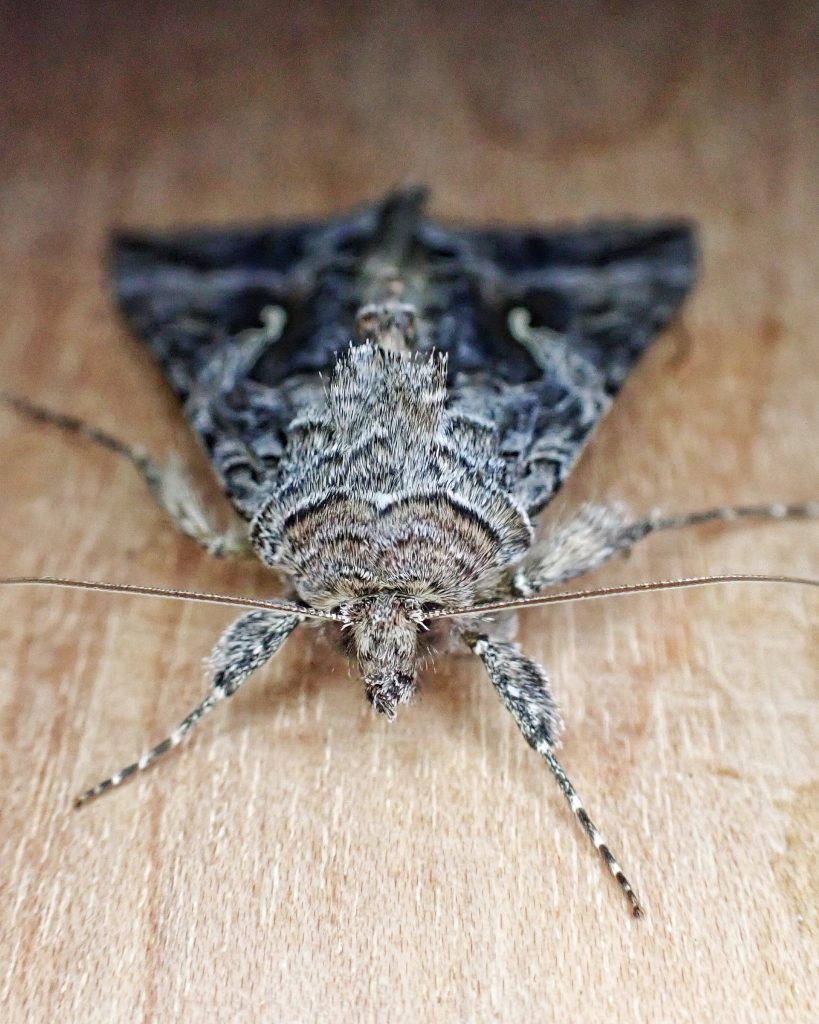
During a recent attempt to disabuse someone on Facebook of the notion that they had found Autographa gamma (silver y moth), a potentially highly invasive species that has not, as yet, established any populations in the US, I was surprised to realize that I hadn’t profiled Autographa californica, which was undoubtedly the species they had photographed. I had assumed it was one of the moths I profiled early on, because it is quite common, distinctive, and rather beautiful, but because I hadn’t, I will rectify that now, since some have come to the lights I’m running while ‘House Sitting – 10,000 Things of the Pacific Northwest’.
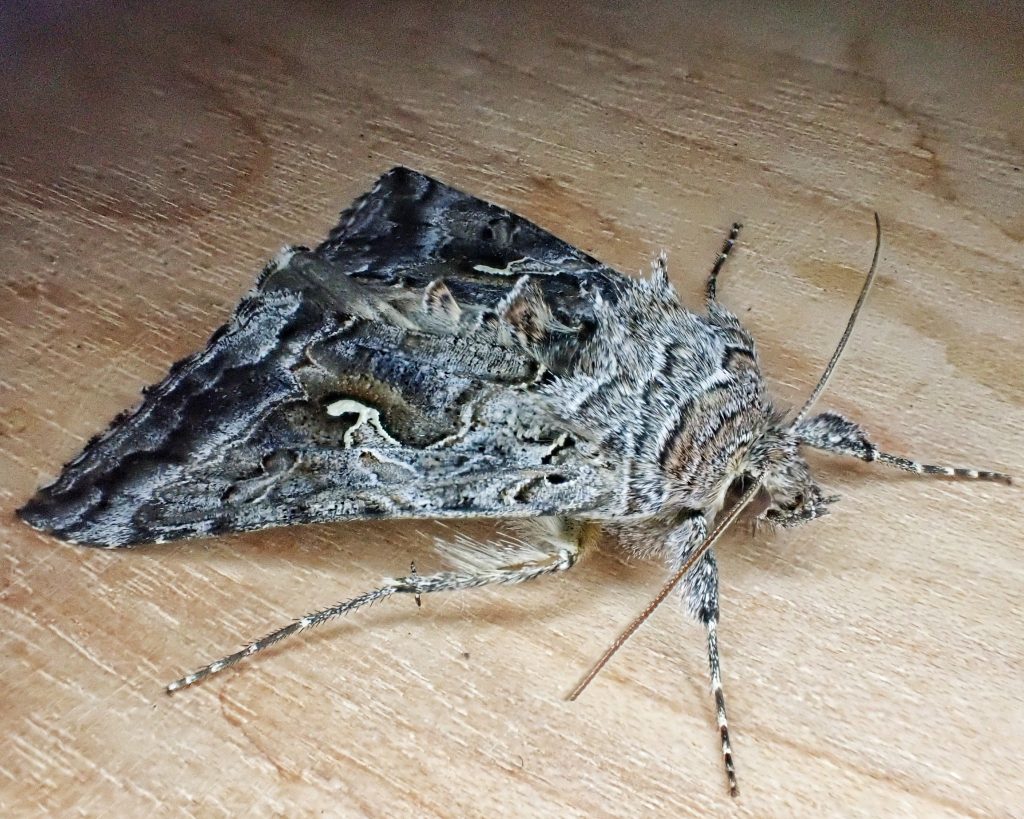
Though they are native, they are considered to be something of a pest species. “Larvae feed on leaves causing ragged-edged holes in the leaf and on the leaf margins. The major damage caused by larvae and pupae is contamination of the heads of cole crops and processed foods, and defoliation of potatoes, peas, sugarbeets, alfalfa, beans, mint, and spinach.” But, as they say at PNW moths “This moth is so ubiquitous that a map of its distribution is a reasonable map of where moths have been sampled!” And the vast majority of those are not eating anyone’s crops.
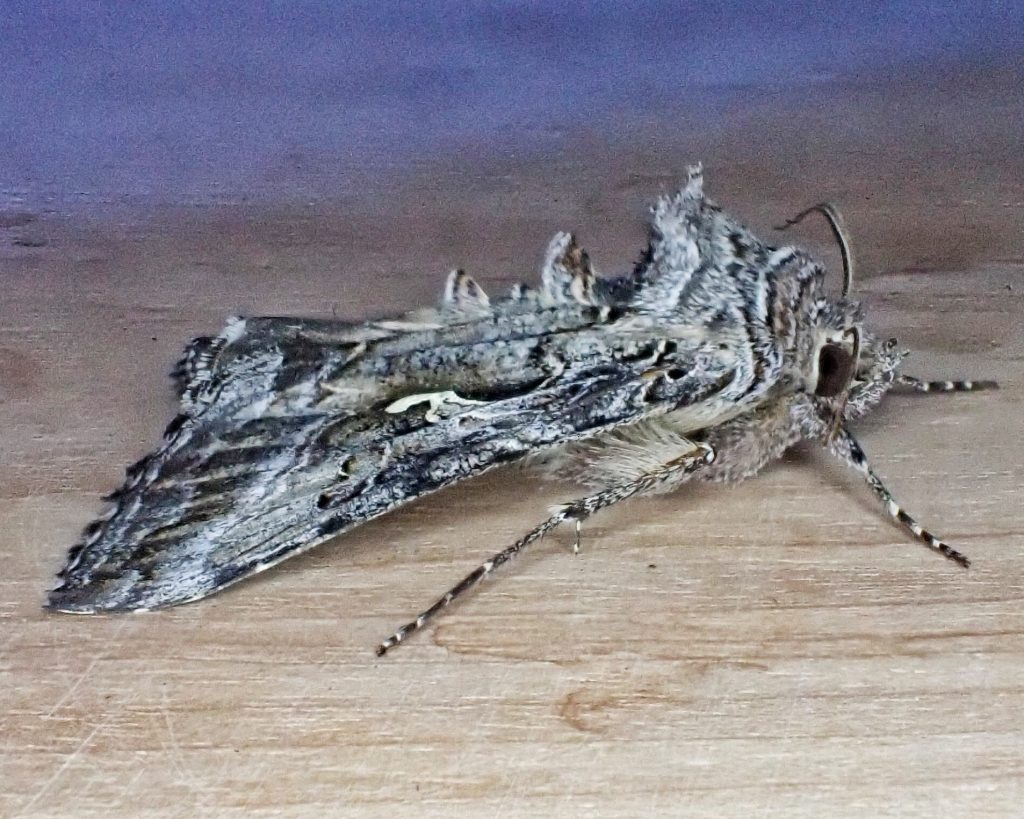
And even the ones that are eating crops are not that big of a problem- “Loopers feed on leaves, but the resulting ragged appearance of leaves is not important unless it is very extensive (more than 50%) and occurs during squaring. June defoliation is seldom sufficiently extensive to cause economic damage to cotton…Loopers are seldom numerous enough to cause significant damage and are usually kept under control by natural enemies. Moderate populations of loopers may be more beneficial than harmful, as they support populations of natural enemies that also attack the more destructive bollworms, budworms, and beet armyworms. In most cases, control is needed only where insecticides applied for other pests have reduced natural enemy populations; in the San Joaquin Valley, cabbage loopers often increase in numbers following treatment for lygus bugs. Occasionally, however, widespread outbreaks occur, apparently as a result of unusually favorable weather.” Alfalfa and Cabbage Loopers / Cotton / Agriculture: Pest Management Guidelines / UC Statewide IPM Program (UC IPM)
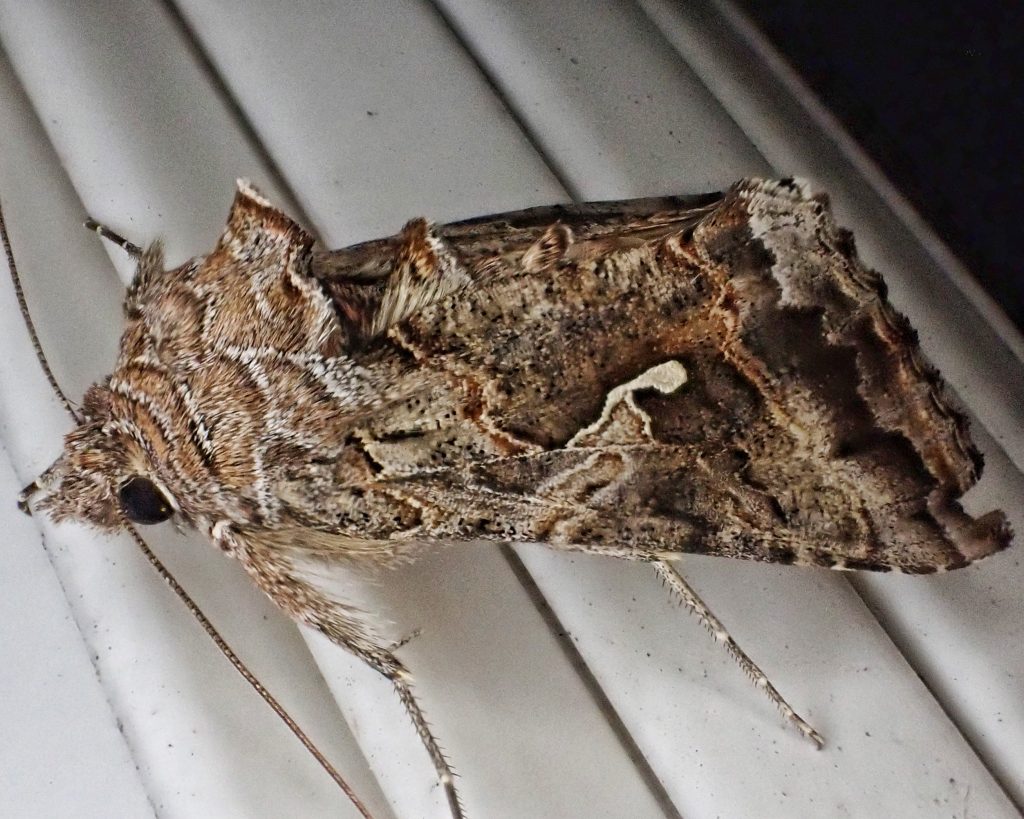
But they do seem to be expanding their range- “Recent sightings across the northern US and eastern Canada may indicate colonization of new territory by the species. Listed below are records east of the Mississippi River both here and on iNaturalist, by state or province ordered by date of first sighting. NS: 2012; WI: 2013; MA: 2017; MN: 2019; RI: 2019; ON: 2019; IL: 2019; VT: 2019; NY: 2019; QC: 2019; ME: 2019.” Species Autographa californica – Alfalfa Looper Moth – Hodges#8914 – BugGuide.Net
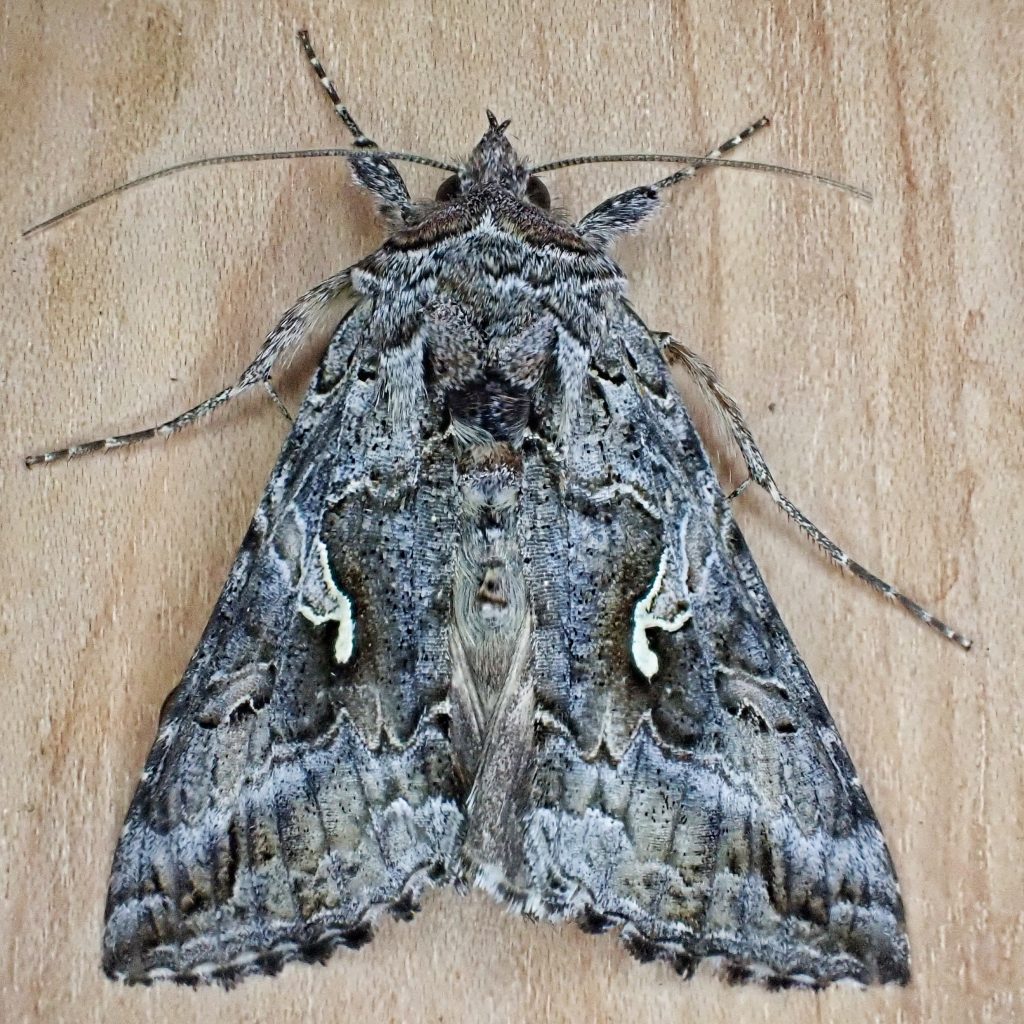
Description– Fw length 16-21mm; “Adult – grayish-black moth with silvery or bluish sheen in fresh specimens; forewing mottled pale gray in basal and subterminal areas, and dark blackish-brown in lower median area and along subterminal line; AM and PM lines and area below stigma dark reddish-brown; stigma silvery white, forming outward curving arc with rounded tip and a widely-separated fork at upper end; black dash connects PM line and ST line about one-third distance from costa along ST line (the dash is the most prominent of several black-outlined veins in subterminal area). Hindwing pale grayish in basal half, shading (usually abruptly) into wide dark terminal band; antennae simple; sexes alike.” Species Autographa californica – Alfalfa Looper Moth – Hodges#8914 – BugGuide.Net
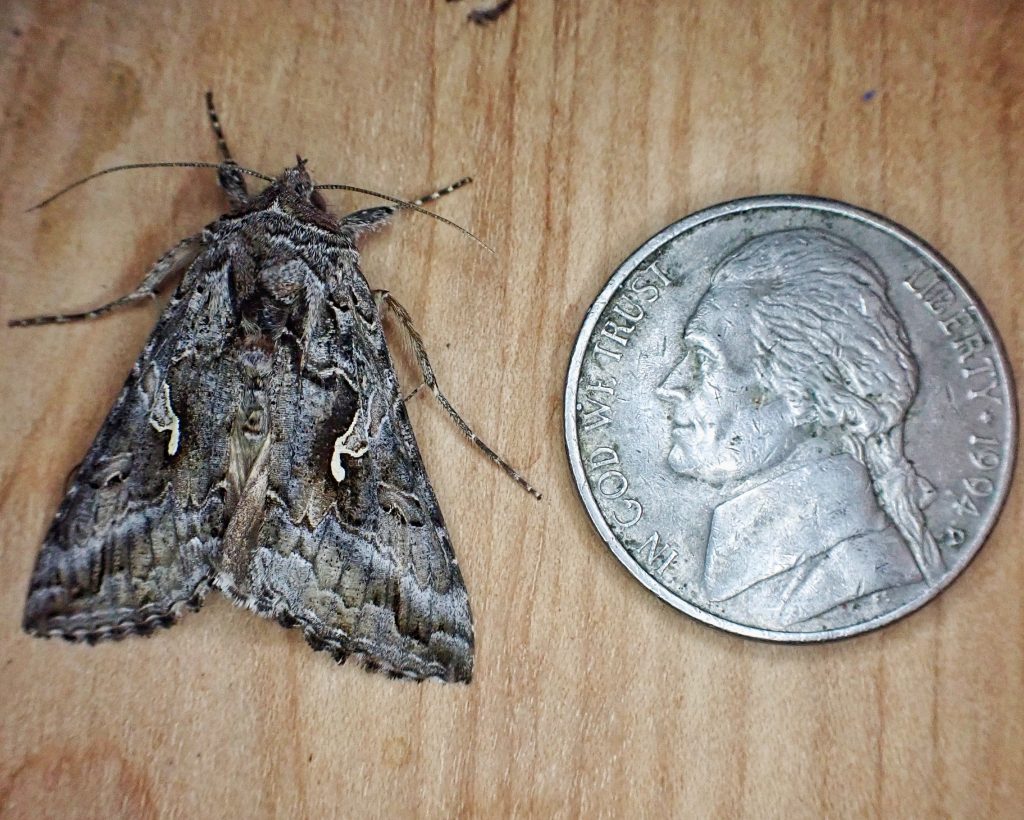
Similar species– “This abundant species is most similar to Autographa pseudogamma, a species that flies at high elevations, and Rachiplusia ou, a rarely collected moth that has only been found in western Montana in the Northwest. A. californica can be told from A. pseudogamma by the black line across the anterior subterminal area that is lacking in A. pseudogamma. A. californica is quite similar to R. ou, but is bluer gray, more mottled, and has a longer lateral part of the stigma. The lateral stigma of R. ou is a small circle, not comma-shaped as in A. californica. Structurally, R. ou has a rough patch of gray scales on the frons and spines on all the tibiae unlike A. californica. They also differ in details of the genitalia described in Lafontaine & Poole (1991). Syngrapha celsa could potentially be confused with A. californica because both are common gray moths with stigmas on the forewing. However, Syngrapha celsa is entirely gray on the forewing, and the stigma is distinctly yellowish.” PNW Moths | Autographa californica
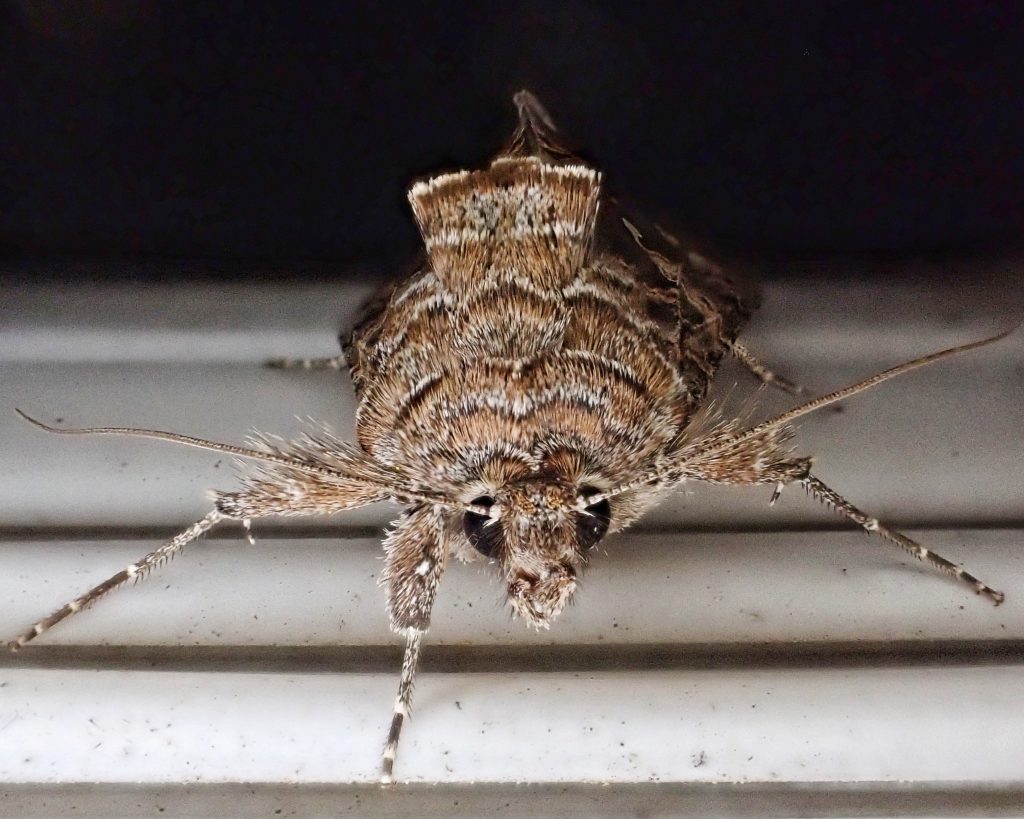
Habitat– “This species is common to abundant throughout western North America. It is often an agricultural pest feeding on herbaceous crops such as alfalfa or peas in open field and urban habitats. It is also very common in natural meadow habitats at all elevations, ranging from coastal grasslands at the edge of the ocean to subalpine meadows at high elevations in the Cascades and Rocky Mountains. It also occurs on sagebrush steppe at low elevations east of the Cascades, but is more uncommon and sporadic in desert habitats outside of irrigated crop fields. This moth is so ubiquitous that a map of its distribution is a reasonable map of where moths have been sampled!” PNW Moths | Autographa californica
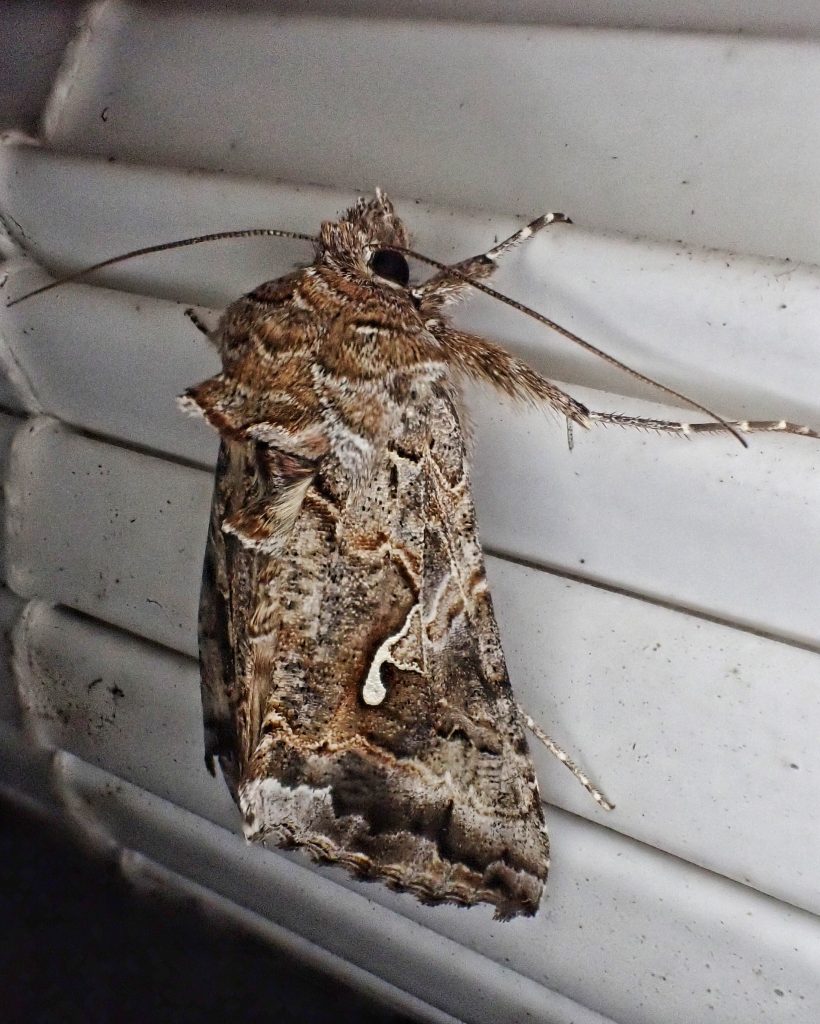
Range– “The range of this species is western North America. It is most common from southern British Columbia to southern Saskatchewan and south to the border with Mexico. It has also been found in central and southern Alaska…Autographa californica is found throughout our region. There is no location or habitat where this moth cannot be found.” PNW Moths | Autographa californica
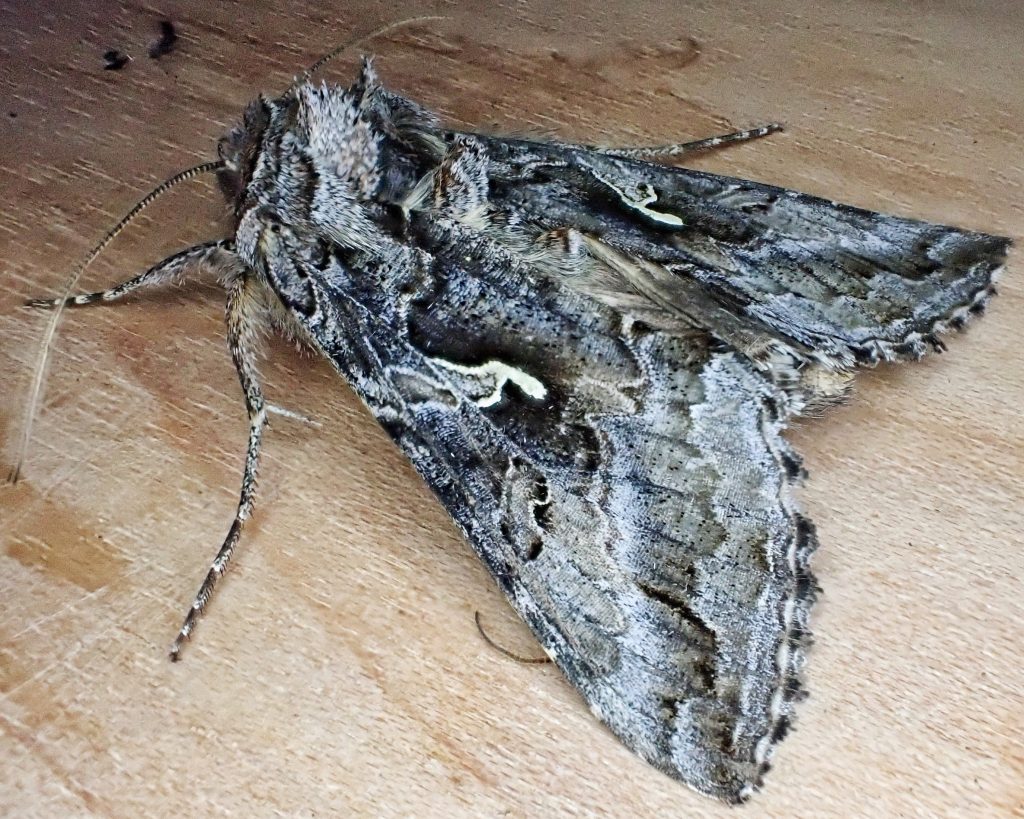
Eats– “Larvae feed on leaves of more than 50 genera of herbaceous plants and woody shrubs; legumes such as alfalfa and clover are common hosts (Eichlin & Cunningham, 1978). Adults nectar on a variety of low plants.” Species Autographa californica – Alfalfa Looper Moth – Hodges#8914 – BugGuide.Net
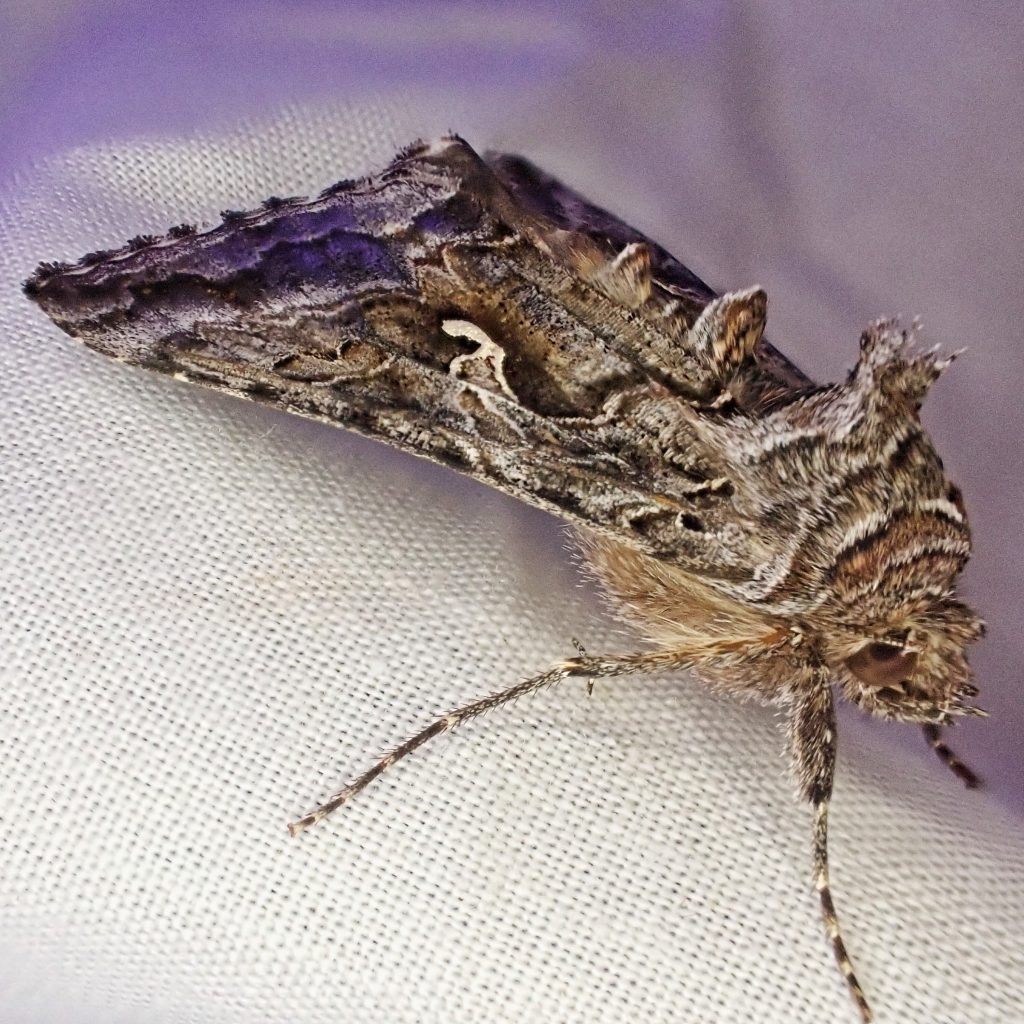
Eaten by– Known larval parasitoids include the chalcid wasp Copidosoma truncatellum, the braconid wasps Microplitis alaskensis, Apanteles yakutatensis, and Meteorus leviventris, ichneumonid wasps in the genus Campoletis as well as Hyposoter exiguae, Sagaritis websteri and Patroclus montanus, and the tachinid flies Madremyia saundersii, and Voria ruralis; Trichogramma wasp larvae eat the eggs; probably preyed upon by insectivores of all classes
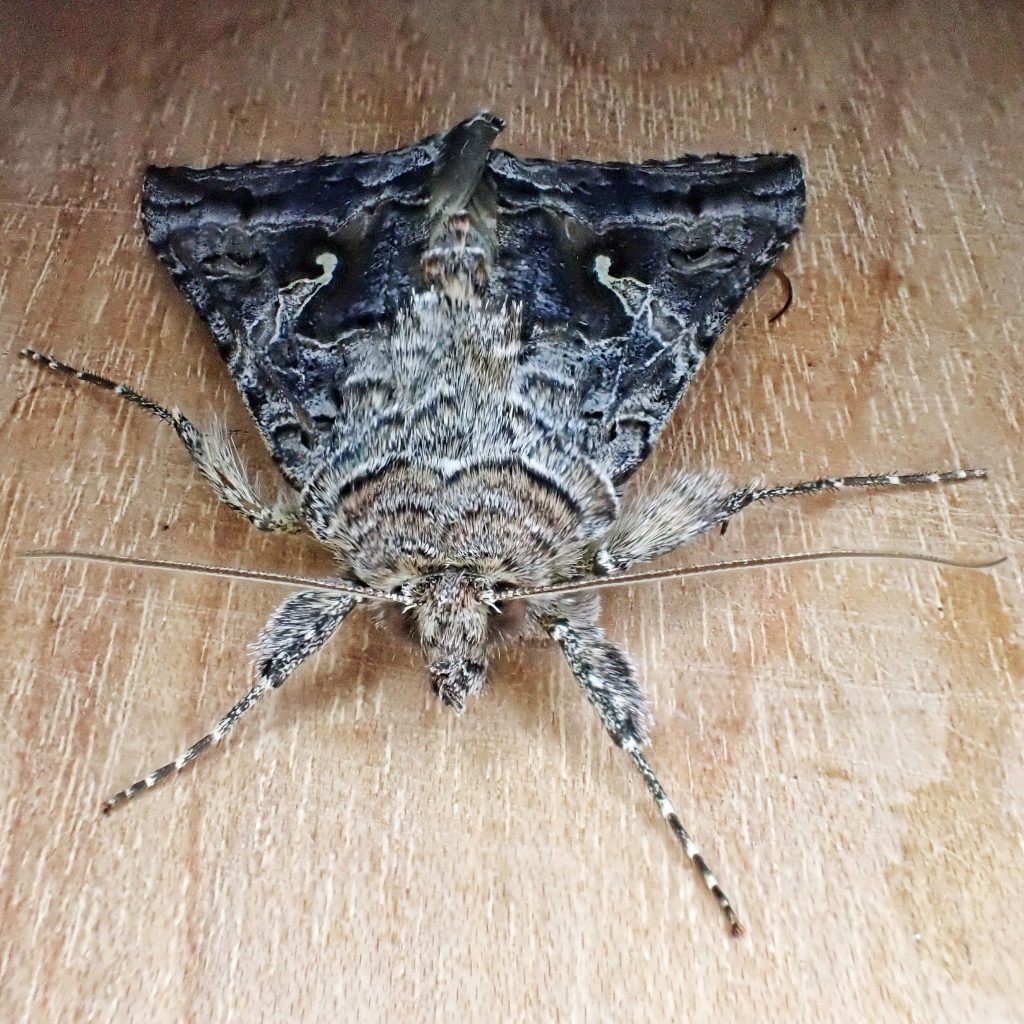
Life cycle– Multivoltine; “The egg stage lasts 7 days after which the larvae feed on the leaves. There are five molts with 3-day interval molts. The larvae pupate in loose white silken cocoons among leaves on the plant, the pupal period varying from 10 to 15 days. The whole life cycle from egg to adult requires 26 to 48 days.” Sci-Hub | The Natural Control of the Alfalfa Looper in Central California | 10.1093/jee/46.4.723; “Alfalfa loopers overwinter as pupae either in soil or in trash near the base of host plants. Moths begin emerging in late April and May and adults lay eggs singly on weed hosts (mostly wild crucifers). Eggs hatch in three to five days and larvae feed for about two weeks before pupating in cocoons on the host plant or in trash. The total development time from egg to egg requires about 30 days. Adults emerge in about seven days, mate, and females deposit eggs as before about three days after emerging. Damage is most evident in June and July and again in September and October. There are three or four generations each year.” https://uspest.org/potato/alfalfalooper.pdf
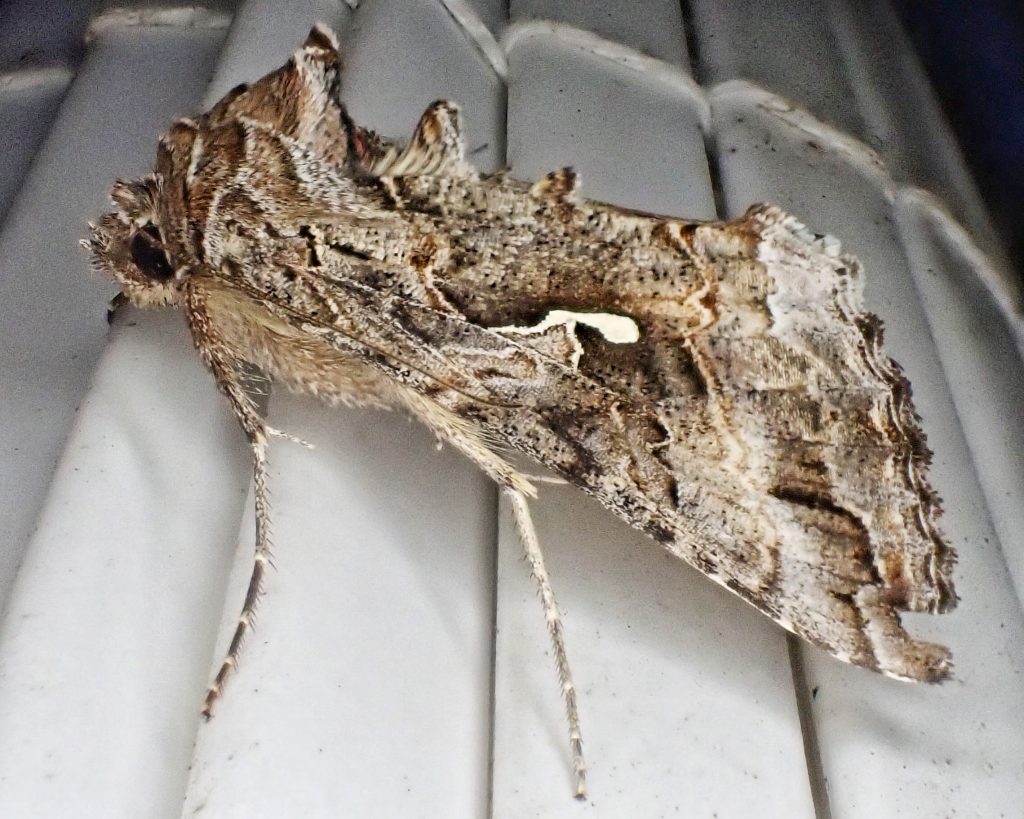
Adults active– “Adults are partially diurnal, and frequently visit flowers for nectar in open meadow habitats during the day. They are most commonly collected during the night and come readily to lights. They have been collected at almost all times of the year, beginning in February and extending to the end of November. The phenogram suggests the presence of three peaks, one in May, one in July, and one in September.” PNW Moths | Autographa californica
Etymology of names– Autographa is from the Greek words for ’self written’, and refers to the letter shaped mark on the forewings. The specific epithet californica refers to the locality of the type specimen.
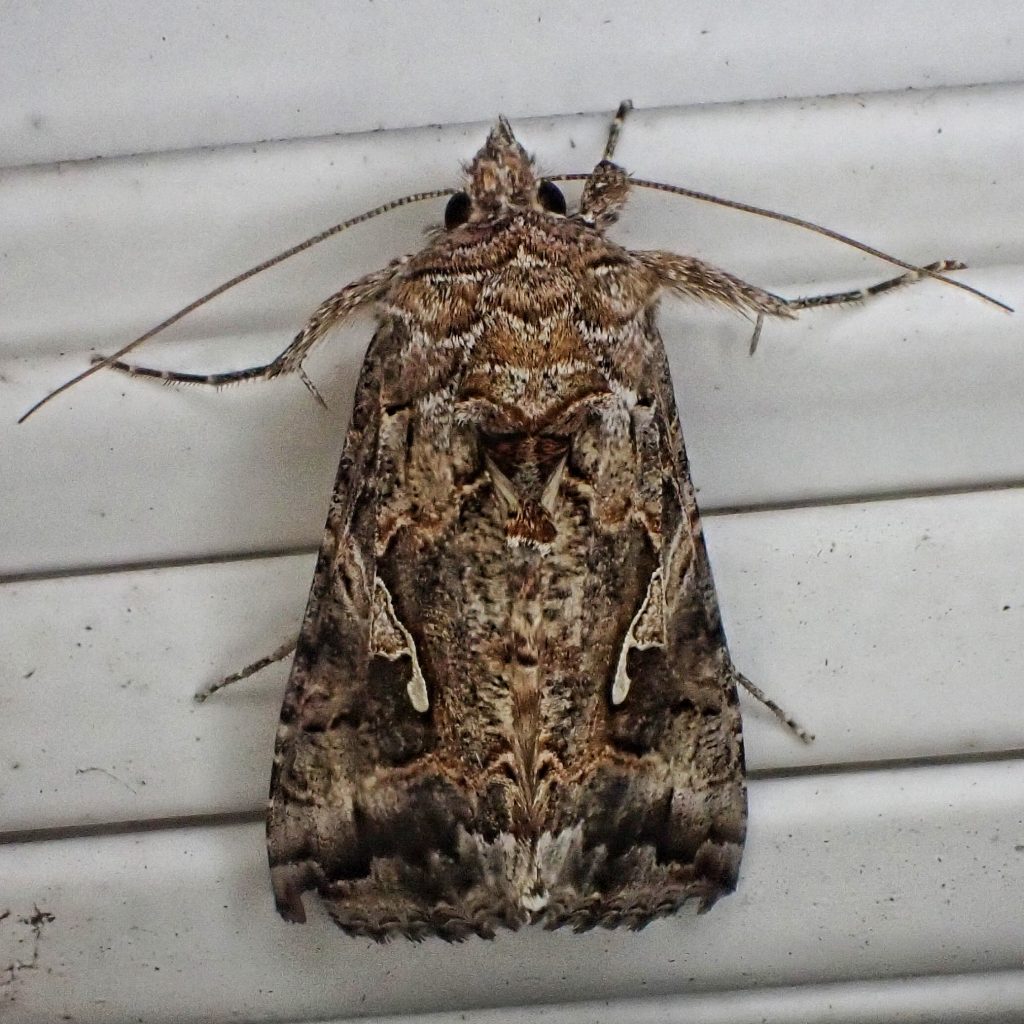
PNW Moths | Autographa californica
Species Autographa californica – Alfalfa Looper Moth – Hodges#8914 – BugGuide.Net
Autographa californica – University of Alberta Museums Search Site
https://uspest.org/potato/alfalfalooper.pdf
Sci-Hub | The Natural Control of the Alfalfa Looper in Central California | 10.1093/jee/46.4.723
http://mothphotographersgroup.msstate.edu/species.php?hodges=8914
